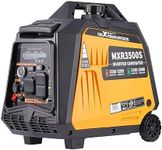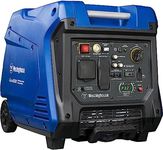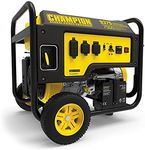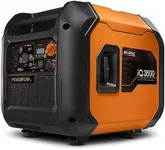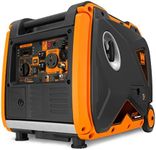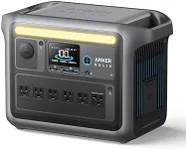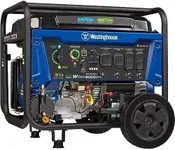Buying Guide for the Best Generator 3500 Watts
Choosing a generator, especially one around 3500 watts, is all about matching your power needs with the right features. Generators are used for backup power during outages, camping, or powering tools and appliances where electricity isn’t available. To pick the best fit, you need to understand what you’ll be powering, how often you’ll use the generator, and in what environment. By focusing on the key specifications, you can ensure you get a generator that’s reliable, safe, and suitable for your needs.Wattage (Running and Starting Watts)Wattage tells you how much power the generator can provide. Running watts is the continuous power it can supply, while starting watts is the extra burst needed to start appliances with motors. For a 3500-watt generator, you can typically run a few essential appliances or tools at once. If you only need to power lights, a fridge, and a few small devices, this size is usually enough. If you want to run larger appliances or several at once, you may need more wattage. Always add up the wattage of everything you want to run at the same time to make sure the generator can handle it.
Fuel Type and Tank SizeGenerators can run on gasoline, propane, or sometimes both (dual-fuel). Gasoline is common and easy to find, but propane can be cleaner and stores longer. Tank size affects how long the generator can run before needing a refill. Smaller tanks mean more frequent refueling, while larger tanks offer longer run times. If you need power for extended periods, look for a larger tank or a model that can use propane tanks for longer operation.
PortabilityPortability refers to how easy it is to move the generator. Some have wheels and handles, making them easier to transport, while others are heavier and more stationary. If you plan to use the generator for camping or moving between locations, portability is important. For home backup, weight and wheels may be less of a concern.
Noise LevelNoise level is measured in decibels (dB) and tells you how loud the generator will be when running. Lower numbers mean quieter operation. If you’ll use the generator in a neighborhood, at a campsite, or near people, a quieter model is better. For remote work sites, noise may not matter as much. Look for models labeled as 'quiet' or with lower dB ratings if noise is a concern.
Outlets and ConnectionsThe types and number of outlets determine what you can plug in. Common options include standard household outlets, RV outlets, and sometimes USB ports. If you need to power specific devices, check that the generator has the right outlets. For RV use, an RV-ready outlet is helpful. For home backup, multiple standard outlets are useful.
Start MechanismGenerators can have manual recoil (pull-start), electric start (push-button), or even remote start. Electric and remote starts are more convenient, especially if you may have trouble with a pull cord. If ease of use is important, look for electric or remote start options.
Safety FeaturesSafety features like low-oil shutoff, overload protection, and carbon monoxide sensors help protect both the generator and the user. Low-oil shutoff turns the generator off if oil is too low, preventing engine damage. Overload protection stops the generator if you try to draw too much power. Carbon monoxide sensors shut down the generator if dangerous fumes build up. These features are especially important for home or indoor-adjacent use.
